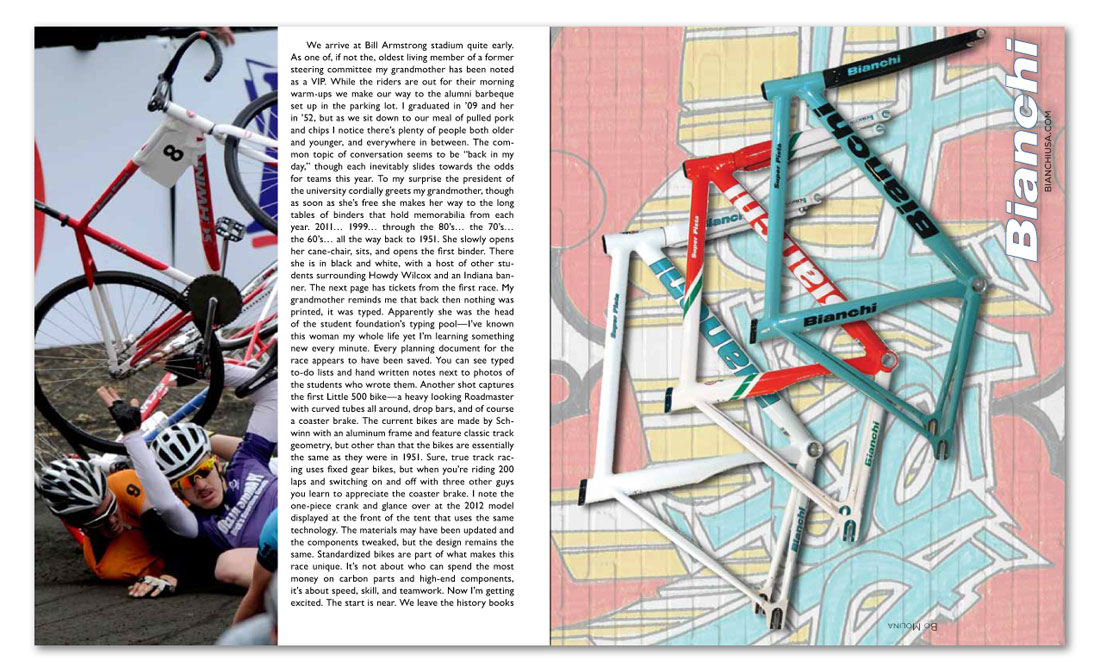


We arrive at Bill Armstrong stadium quite early. As one of, if not the, oldest living member of a former steering committee my grandmother has been noted as a VIP. While the riders are out for their morning warm-ups we make our way to the alumni barbeque set up in the parking lot. I graduated in ’09 and her in ’52, but as we sit down to our meal of pulled pork and chips I notice there’s plenty of people both older and younger, and everywhere in between. The common topic of conversation seems to be “back in my day,” though each inevitably slides towards the odds for teams this year. To my surprise the president of the university cordially greets my grandmother, though as soon as she’s free she makes her way to the long tables of binders that hold memorabilia from each year. 2011… 1999… through the 80’s… the 70’s… the 60’s… all the way back to 1951. She slowly opens her cane-chair, sits, and opens the first binder. There she is in black and white, with a host of other students surrounding Howdy Wilcox and an Indiana banner. The next page has tickets from the first race. My grandmother reminds me that back then nothing was printed, it was typed. Apparently she was the head of the student foundation’s typing pool—I’ve known this woman my whole life yet I’m learning something new every minute. Every planning document for the race appears to have been saved. You can see typed to-do lists and hand written notes next to photos of the students who wrote them. Another shot captures the first Little 500 bike—a heavy looking Roadmaster with curved tubes all around, drop bars, and of course a coaster brake. The current bikes are made by Schwinn with an aluminum frame and feature classic track geometry, but other than that the bikes are essentially the same as they were in 1951. Sure, true track racing uses fixed gear bikes, but when you’re riding 200 laps and switching on and off with three other guys you learn to appreciate the coaster brake. I note the one-piece crank and glance over at the 2012 model displayed at the front of the tent that uses the same technology. The materials may have been updated and the components tweaked, but the design remains the same. Standardized bikes are part of what makes this race unique. It’s not about who can spend the most money on carbon parts and high-end components, it’s about speed, skill, and teamwork. Now I’m getting excited. The start is near. We leave the history books